Burkina Faso is a landlocked country in Africa around 274,200 square kilometers (105,900 sq. mi) in size. It is surrounded by six countries: Mali to the north; Niger to the east; Benin to the southeast; Togo and Ghana to the south; and Ivory Coast to the southwest. Its capital is Ouagadougou. In 2014 its population was estimated at just over 17.3 million. Burkina Faso is a francophone country and French is the official language of government and business. Formerly called the Republic of Upper Volta, the country was renamed "Burkina Faso" on 4 August 1984 by then-President Thomas Sankara. Residents of Burkina Faso are known as Burkinabé
Burkina Faso

Location
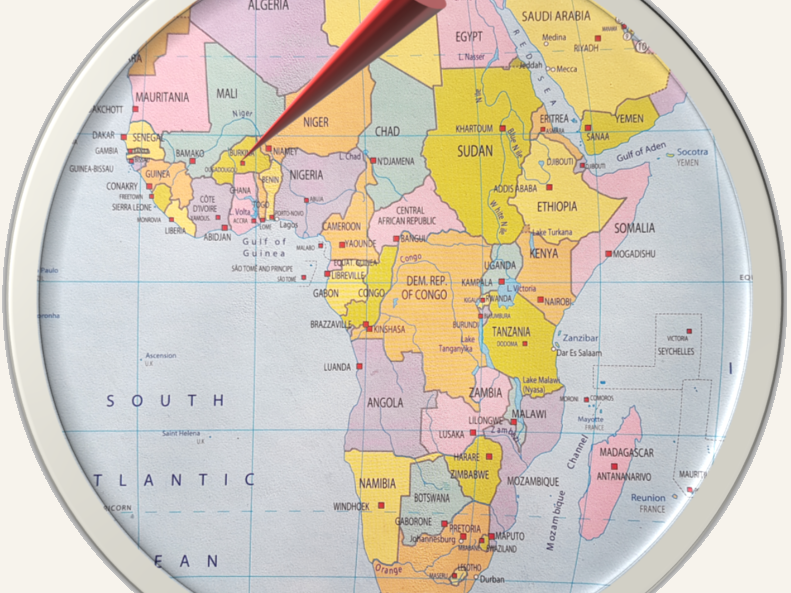
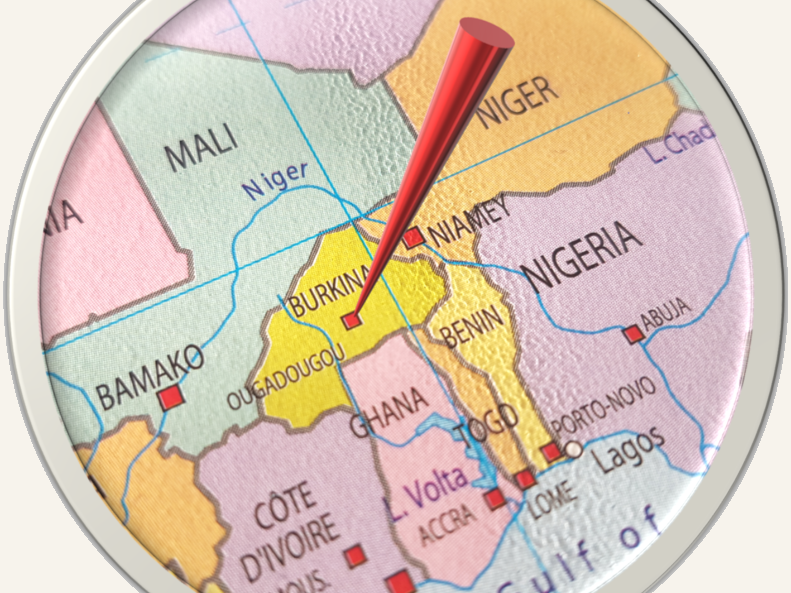
Burkina Faso lies mostly between latitudes 9°S and 15°N (a small area is north of 15°), and longitudes 6°W and 3°E.
Vegetation und Clime


A relatively dry tropical savanna, the Sahel extends beyond the borders of Burkina Faso, from the Horn of Africa to the Atlantic Ocean, and borders the Sahara to its north and the fertile region of the Sudan to the South. Situated between 11°3' and 13°5' north latitude, the Sudan-Sahel region is a transitional zone with regards to rainfall and temperature. Further to the south, the Sudan-Guinea zone receives more than 90 cm (35.4 in) of rain each year and has cooler average temperatures.
Religion
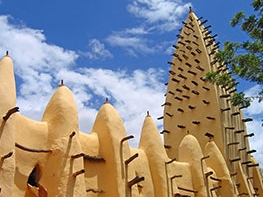
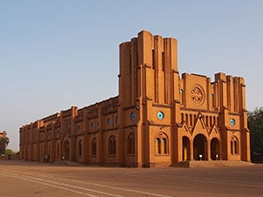
Statistics on religion in Burkina Faso are inexact because Islam and Christianity are often practiced in tandem with indigenous religious beliefs. The Government of Burkina Faso 2006 census reported that 60.5% of the population practice Islam, and that the majority of this group belongs to the Sunni branch, while a small minority adheres to Shia Islam. There are also large concentrations of the Ahmadiyya Muslims.
History

Before the conquest of what is now Burkina Faso by the French and other colonial powers during the late 19th century the country was ruled by various ethnic groups including the Mossi kingdoms. After gaining independence from France in 1960, the country underwent many governmental changes. Blaise Compaoré was the most recent president and ruled the country from 1987 until he was ousted from power by the popular youth upheaval of 31 October 2014. This resulted in a semi-presidential republic which lasted from October 2014 to September 2015. On 17 September 2015 the provisional government was in turn toppled by an apparent military coup d'état carried out by the Regiment of Presidential Security. On 24 September 2015, after pressure from the African Union, ECOWAS, and the armed forces, the military junta agreed to step down, and Michel Kafando was reinstated as Acting President.
Politics
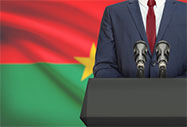
The constitution of 2 June 1991 established a semi-presidential government: its parliament could be dissolved by the President of the Republic, who was to be elected for a term of seven years. In 2000, the constitution was amended to reduce the presidential term to five years and set term limits to two, preventing successive re-election. The amendment took effect during the 2005 elections. If passed beforehand, it would have prevented Compaoré from being reelected.
Other presidential candidates challenged the election results. But in October 2005, the constitutional council ruled that, because Compaoré was the sitting president in 2000, the amendment would not apply to him until the end of his second term in office. This cleared the way for his candidacy in the 2005 election. On 13 November 2005, Compaoré was reelected in a landslide, because of a divided political opposition.
In the 2010 Presidential elections, President Compaoré was re-elected. Only 1.6 million Burkinabés voted, out of a total population 10 times that size.
The 2011 Burkinabè protests were a series of popular protests that called for the resignation of Compaoré, democratic reforms, higher wages for troops and public servants and economic freedom. As a result, Governors were replaced and wages for public servants were raised.
The parliament consisted of one chamber known as the National Assembly which had 111 seats with members elected to serve five-year terms. There was also a constitutional chamber, composed of ten members, and an economic and social council whose roles were purely consultative. The 1991 constitution created a bicameral parliament but the upper house (Chamber of Representatives) was abolished in 2002.
The Compaoré administration had worked to decentralize power by devolving some of its powers to regions and municipal authorities. But the widespread distrust of politicians and lack of political involvement by many residents complicated this process. Critics described this as a hybrid decentralisation.
Political freedoms are severely restricted in Burkina Faso. Human rights organizations had criticised the Compaoré administration for numerous acts of state-sponsored violence against journalists and other politically active members of society.
In mid-September 2015 the Kafando government, along with the rest of the post-October 2014 political order, was temporarily overthrown in a coup attempt by the Regiment of Presidential Security (RSP). They installed Gilbert Diendéré as chairman of the new National Council for Democracy. On 23 September 2015, the prime minister and interim president were restored to power. The national elections were subsequently rescheduled for 29 November.
Kaboré won the election in the first round of voting, receiving 53.5% of the vote against 29.7% for the second place candidate, Zephirin Diabré. He was sworn in as President on 29 December 2015.
Economy
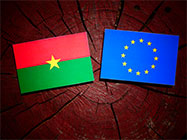
The value of Burkina Faso's exports was $754 million in 2012. Agriculture represents 32% of its gross domestic product and occupies 80% of the working population. It consists mostly of rearing livestock. Especially in the south and southwest, the people grow crops of sorghum, pearl millet, maize (corn), peanuts, rice and cotton, with surpluses to be sold. A large part of the economic activity of the country is funded by international aid.
Agriculture

Although Burkina Faso is not self-sufficient in food, agriculture in Burkina Faso has tremendous potential. It employs the vast majority of the work force and accounted for an estimated 31 percent of Gross Domestic Product in 2004. However, only an estimated 13 percent of the total land area is under annual or perennial crops. Government attempts to modernize the agricultural sector have met with some success, especially with cotton, whose export accounted for 51 percent of total exports in 2004. In 2004, about 85 percent of the 210,000 tons of cotton produced was exported. The resistance to improvement has been due mostly to the insufficient water supply and poor soil. Although total cereal production rose from 1,547,000 tons in 1990 to 3,063,000 tons in 2004, imports are needed to meet demand.
Production figures for principal subsistence crops in 2004 were sorghum, 1,481,000 tons; millet, 881,000 tons; corn, 595,000 tons; and rice, 95,000 tons. Commercial crops (with 2004 production figures) included cottonseed (315,000 tons), groundnuts (321,000 tons), cotton fiber (210,000 tons), and sesame (29,000 tons).
Other important crops are cassava, cowpeas, sweet potatoes, and tobacco. Sugarcane has been introduced on a large scale and is becoming an important cash crop; 450,000 tons were produced in 2004.
State budget

2016 Budget: XAF 1,724.80 Billions
